Share this post:
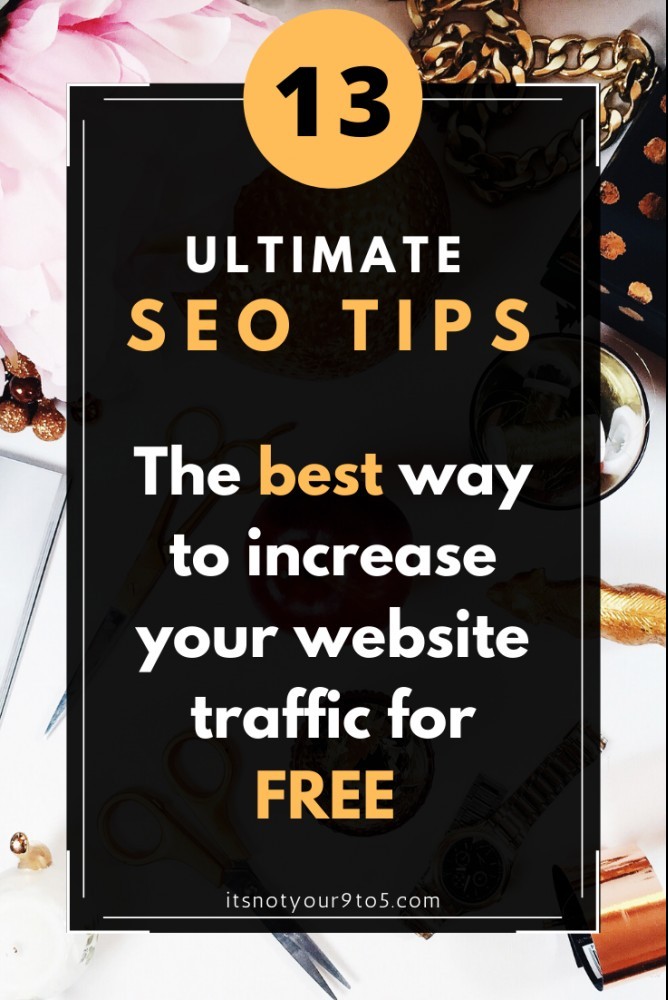
The best way to increase website traffic for FREE in Google, is to master your SEO skills. An SEO friendly blog post will get ranked on top of Google, therefore, it stands a much higher chance for someone to click through.
So how to write an SEO friendly blog post?
Today I am going to share with you the best way to increase website traffic – 13 ultimate SEO tips, so you can skyrocket the google ranking for your next post.
I will also be answering frequently asked questions such as:
- What is SEO?
- What is keyphrase?
- How to use keyphrase in the blog posts?
- How many words should a blog post be for SEO?
… and if you make it to the end, I have a free checklist for you so you can use it for your next post.
Without further ado, let’s get started…
First thing first, what is SEO?
SEO stands for Search Engine Optimize.
In the online world, we often reference it as a practice to increase traffic organically via search engines, such as Google, Bing, Yahoo etc.
Disclosure: Some of the links in the article contains affiliate links, which means that if you make a purchase through one of the links, I will receive a small commission at no extra cost to you. This helps support the blog and allows me to continue to make free content. I will only recommend products that I use and love. Thank you for your support!
13 SEO Tips – the best way to increase website traffic for FREE
SEO Tip #1: Keyphrase research
SEO tip #1 for the best way to increase website traffic, is to do research on keyphrase.
What is keyphrase?
Keyphrase is what people type in Google when they search for something. Keyphrase is very specific to what people are looking for, and is usually made up of 3-5 keywords. To get a bit more technical, in the blogging world, these are often called long-tail keywords.
For example, if you are searching for restaurants that are children friendly in London. Rather than typing in “restaurant” (keyword) in Google, instead, you would type in something like “children friendly restaurants in London” (Keyphrase or Long-tail keywords).
Before writing your next blog, spending the time to find a high traffic and low competition keyphrase is the most critical step on how to write an SEO friendly blog post.
Your goal is to write a blog that centers around the specific keyphrase so it can be ranked high on search engines such as Google. The higher your post ranks, the higher the chance of organic traffic.
There are so many keyword searching tools on the market with a wide price range. The one that I use is called Jaaxy.
I like it for 3 simple reasons:
- Reasonably priced
- Beginner-friendly with a free trial
- Effective on finding unique keyphrase.
Find your keywords with Jaaxy here…
SEO Tip #2: Avoid previously used keyphrase
This is one tip that I wish I knew when I started blogging….
I used to think that if I write 5 blog posts targeting the same keyphrase, that must be good for Google ranking of my site right?
Exactly the opposite, because you are basically competing with yourself and confusing Google.
When search engines try to rank your 2 posts that are optimized for the same keyphrase from the same domain, it gets confused. As a result, it might give both of the posts a lower ranking and put another persons post at a higher ranking.
Therefore, it is important to only use keyphrase once.
SEO Tip #3: the best way to increase website traffic for FREE – The optimum blog length
How many words should a blog post be for SEO?
As a minimum, a blog post needs to be at least 300 words to be ranked well in search engines.
However, according the 2019 Annual Blogging Survey from Orbit Media, 55% of bloggers who wrote more than 2000 words on a typical post, reported “Strong results”, comparing with those who wrote less than 500 words, only 22% reported “Strong results”.
Writing a long quality post (<1000 words) will help your SEO ranking greatly. The search engines sees it covers the topic more thoroughly by address from different aspects, therefore provides more value to the readers.
SEO tip #3, for the best way to increase website traffic, is to target the blog between 1000-2000 words if you are starting out. Once you get a hang of it, then push yourself beyond 2000 words.
SEO Tip #4: the best way to increase website traffic for FREE – Include keyphrase in the title / Headline
The title / headline is one of the first things that the search engine looks for to determine what your post is all about. It is the front door to your store.
In fact, according to Orbitmedia’s 5 year of blogging statistics, data and trends, “an average blogger writes four headlines before selecting one”.
If the title is so important, you want to make sure you place the chosen keyphrase in it, ideally at the beginning of the title, so it is loud and clear on what your store is all about.
SEO Tip #5: the best way to increase website traffic for FREE – Place keyphrase in introduction & closing
The 5th SEO tip, for the best way to increase website traffic, is to include the keyphrase in both introduction paragraph and at the end of closing paragraph.
You’ve created a catchy title, and readers clicked through it. The introduction paragraph is the next immediate chance for you to impress them by telling them why they should keep reading.
This is also how search engines determine the quality of your post.
By placing the chosen keyphrase in your introduction and providing an explanation on what your post is all about, including what problem you can help to solve, will help your SEO ranking.
It’s even better, if you can have the keyphrase in the first sentence of your introduction.
It is also important to place the chosen keyphrase near the end of your post, usually in the “Conclusion” or “Final thought” section. Especially for a long blog post, this will help to remind readers of the main message of your post.
SEO Tip #6: Place keyphrase in subheading
Firstly, to make a blog post (especially a longer one) easy to read, it is important to divide the post into many sections. Each section should have a subheading. The subheadings will outline the topic of your entire post.
It’s important to use font sizes above Heading 3 (H3) for subheadings. Not only it helps the readability but also Google only recognizes any H2 and H3 subheadings in your post.

SEO tip #6, for the best way to increase website traffic, is to place keyphrase in the subheadings when appropriate.
The rule of thumb here is to place keyphrase 30-75% of all subheadings in one post. For example if you have 10 subheadings in your post, try to aim for 3 to 7 subheadings that contain the keyphrase.
SEO Tip #7: Keyphrase in image alt. attributes
Have you heard “a picture is worth a thousand words”?
Having images in your blog helps to provide visual aspects of your message. Placing keyphrase in the image alt. text will help to improve your chance of ranking in the image search.
Here’s how to edit the alt. text for your blog images.
When you upload an image in WordPress, it will ask you to enter the “Alternative Text” as below. Include keyphrase here.
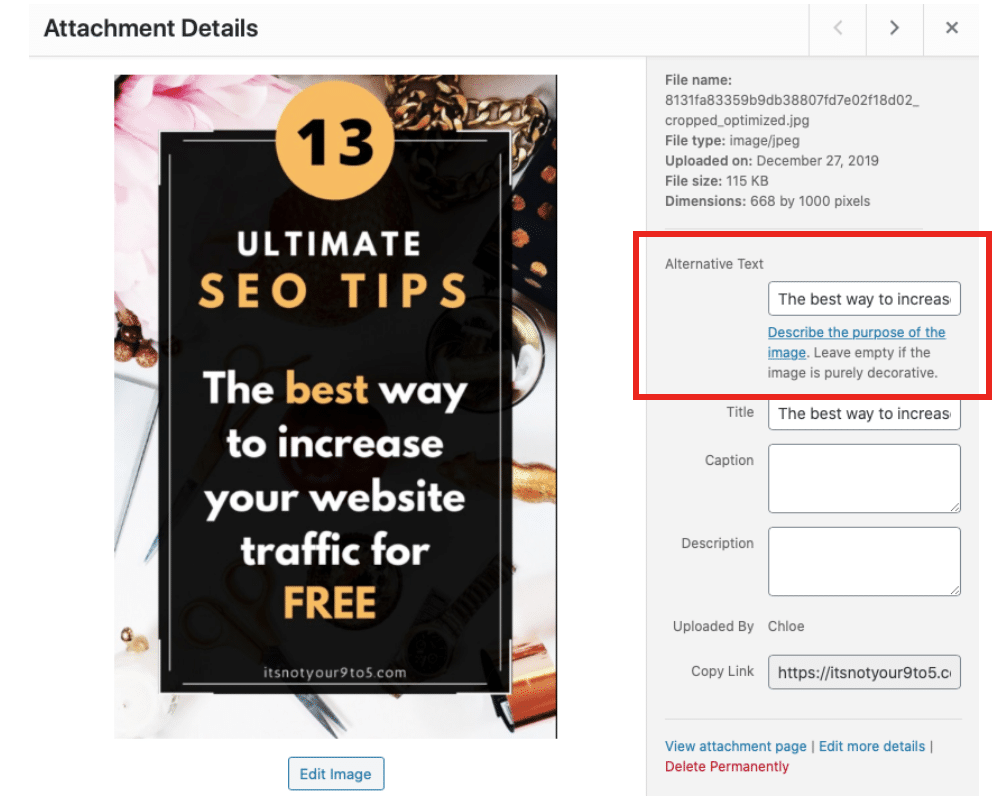
Aim for 30-70% of images that contain keyphrase. Say if you have 5 images for a specific blog, place keyphrase in 1 to 4 of them.
SEO Tip #8, for the best way to increase website traffic – Keyphrase density
This is how many times you have used the chosen keyphrase in your blog.
For example, if you are trying to rank for the keyphrase “write SEO friendly blogs”, the below variations will all count as an appearance:
- “How to write the best SEO friendly blogs”
- “Writing a SEO friendly blog”
As long as all words appear to be in one sentence, it counts as an appearance.
So is it the best to use keyphrase as often as possible in your blog? – Of course not.
Using keyphrase too many times, is called keyphrase stuffing. This will impact the readability of your post therefore, it will hurt your SEO ranking.
The sweet spot for SEO ranking is 0.5-3% density. Say if your blog has 1000 words, you only need to the keyphrase to appear 1-3 times throughout your blog.
SEO Tip #9: Place keyphrase in meta description
SEO tip #9, for the best way to increase website traffic, is to place keyphrase in the meta description of your blog post.
Meta description is a short text that appears below the blog post title in search engine (see picture below)

Search engines often use meta description as your snippet in the search results page, although sometimes it picks a piece of text from your blog if it thinks is more suitable for the specific search intent.
Placing keyphrase in meta description is important, because it will help visitors to determine whether they will click your post to read more. The blogs that get a lot of clicks (aka click-through rate) get ranked higher by the search engine.
SEO Tip #10, for the best way to increase website traffic – place keyphrase in the slug
The post slug is part of the URL that takes people to the specific blog post. An SEO friendly slug is one that contains the chosen keyphrase, catchy, but not too long.
Here’s where you can edit the post slug:
Under the each of your Edit Post page, scroll down, you will find something similar to below.

SEO Tip #11: Outbound links
SEO tip #11, for the best way to increase website traffic, is to make sure that you share a minimum of 1 external link in your article as appropriate. This is a link that directs the reader from your website to another website.
Ideally if you can link to high authority sites, this will not only help to increase the relevance, but also boost the value of your post.
According to an experiment conducted by WebFX on how outbound links effect SEO ranking, the blog posts that shared relevant, outgoing links to authority websites ranked higher in search engines than the ones that didn’t.
SEO Tip #12: Internal links
It’s a good practice to link your past posts in your new post. This not only gives the reader more information about your other related topics, but also keeps them on your site longer. This will all help with the SEO ranking.
SEO Tip #13: Use Yoast SEO plugin in WordPress
This last SEO tip, for the best way to increase website traffic, is a powerful FREE tool for the WP users – Yoast SEO.
This is the best FREE tool I came across to help me with SEO optimization.
It checks your blog post against a high SEO standard and its readability, and gives you a list of things that you need to further work on.
Once you get a green light on your SEO and readability from Yoast, you can hit that publish button with confidence.
It does have a premium version which offers much more powerful features, however, if you are new to SEO, I would start with the Free version before considering upgrading to a paid version.
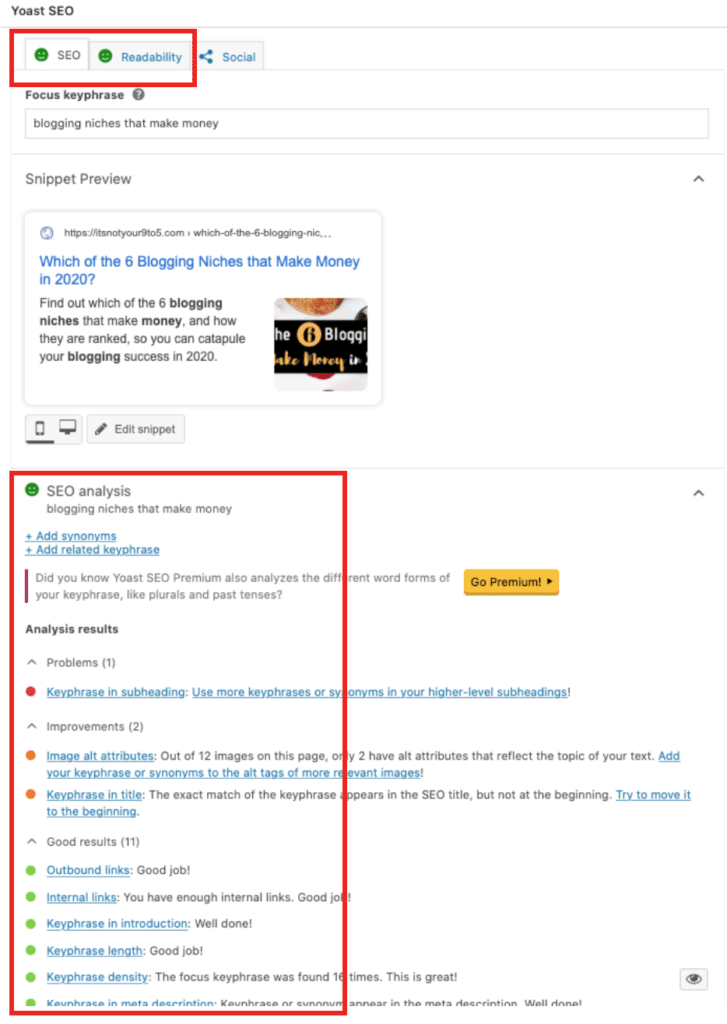
Final thoughts on the best way to increase website traffic…
You worked hard on writing every piece of your blog post. Making sure each post is optimized for search engine is one of the best ways to increase website traffic for FREE.
Implementing these 13 actionable SEO tips, can help you skyrocket the organic traffic for your next blog post.
Be sure to download your FREE SEO checklist here:
Master SEO is not as hard as you think…
Download this highly effective SEO checklist for FREE so you can up your Google ranking one post at a time.
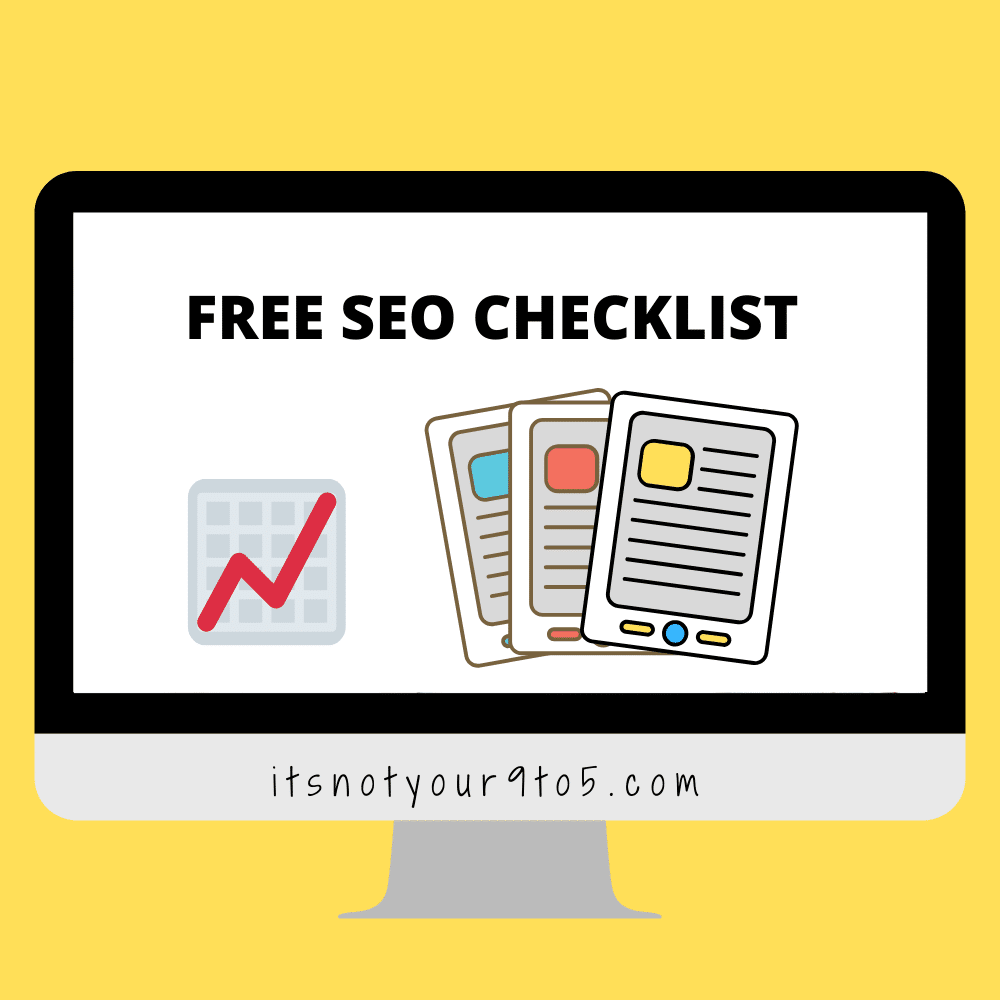

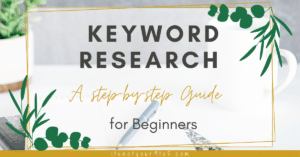
Thank you so much for the awesome post! A lot of people do not realize how important it is to have a post that has at least 1000 words in it. Preferably, like you said, as one gets continues to grow in their site, they will want to write at least 2000 words. That seems like a tough task, but if you think about, if you chose the right keywords, and you really are passionate about what you are writing about, that is not as hard as it first sounds. It’s not a college essay, it’s a passionate post about things you enjoy!
I totally agree Jessie, picking the niche that you are passionate about is what will propel us forward when things get hard…
The more you practice the easier it gets as well.
Enjoy the journey!
Chloe
Hello Chloe, very good post! I can understand more about SEO. True to your word, that SEO is a way to bring in traffic for free. And apparently, these days, many people are competing to get traffic. I also have a website, but I have very little traffic.
Therefore, I am very grateful for the tips you provided. Because I will try to apply it to my website.
Regarding what you write about keyphrase or long-tail-keywords, do keywords always have to be long? What if the keywords used are short or only one word?
Then, with regard to outbound links, how can we know the website’s high authority? Is there a way to check it?
Thanks Chloe
_kylie_
Hi Kylie,
Great questions… here are my thoughts:
1. Long-tail keyphrase are usually more than 3 keywords long in order to be specific to what people are searching for. If you can find a keyword or short keywords that are high in SEO score and low in competition, that would work too. Use a keyword search tool can help you check these statistics. You can try Jaxxy for FREE here.
2. To find high authority outbound links, firstly it needs to be relevant to your article. Then, search for the keywords on Google are related to what you are looking for, whatever come up on the first page are likely to be high authority sites. I also like to search a few different keywords for the same niche. If certain sites come up consistently on top, that is a good sign of being high authority for that niche. Finally, I would also read about the related article from the particular site and judge the quality of the content.
Hope it helps.
Chloe
These are simple tips that can with time turn to be the most important that can save one’s website. This is really great to see here. Thumbs up to you for sharing up here getting website traffic is the best way to making sure that everything works perfectly fine and okay with websites. Great post here. Thanks
It’s like exercising, the more you do it the better it gets =) Thanks for stopping by!
This is such a simple yet great tips! I’m just starting a new blog weeks ago and thought that keyword (or keyphrase?) should only be included in the title. I rarely use images in my articles, guess it’s time to update all the articles to include images. I never heard about Jaaxy, so I will check your in-depth review. Thanks again.
I am so glad that you found these simple tips helpful, and they are simple to implement too!
Hope you can use the Free cheat sheet to keep all of them checked off, so you can fine tune your SEO skills!
All the best,
Chloe
You really pointed out some few things here that sometimes as an affiliate marketer I usually get confused. I find it at times difficult to know the average word count of my contents best for rankings. Sometimes I worry I’m writing too much or less.
I’m happy to know just like you pointed out that 55% of bloggers who wrote more than 2000 words on a typical post, reported “Strong results”. There was a time I wrote a content about 4000 words. I became skeptical and started cutting down words. When I checked the counter and saw it to be below 1500 words, I became worried that I need to increase it, lol. I love giving my readers quality contents.
From your findings above, I now know how to estimate my word count.
And the use of a good keyword tool is very important and plays a crucial role to our success going forward in terms of getting ranked quickly and getting organic traffic on search engines like Google. I too make use of Jaaxy for my keyword research and it has been awesome.
This is really a helpful post. Thank you.
Hi Kell,
I know it can be confusing on how many words for a typical blog really should be. Having the data behind what worked for many bloggers hopefully gives you a good gauge.
At the end of the day, as long as you can write the QUALITY content and provide value for your readers, then that’s all it matters.
Best luck!
Chloe
I went into my latest site with all good intentions and now, four posts in, I find that I am lacking a number of the points you have indicated. I really struggle with the proper formulation of a good title, as far as it being SEO friendly, that is. I just want to have a catchy title but that doesn’t always mean it’s going to be something that someone would search for.
Article length is also a bit hit and miss, although I can say that none of them are less than 800 words and generally they are all above 1000. I also never use sub-headings, I had no idea they were so important. I do use plenty of paragraphs to break up the text, I guess I need to do more on that front.
It would seem, quite rightly, that you could spend as much time writing your article as you would making it SEO friendly. Using the Yoast Plugin would be an excellent idea. I have heard of it but neven used it. Maybe now would be a good time to start.
Hi,
I was exactly the same when I started blogging. I thought if I just keep producing helpful information then eventually i will get traffic. However there are actually formula to speed up that process to make posts SEO friendly, therefore getting ranked high on Google. The 13 SEO tips hopefully will give you a start.
I highly recommend the Yoast SEO plugin. Even the free version will greatly help you to get in the habit of following these formula to be SEO friendly.
Best luck my friend!
Chloe
These days, people are ready to spend a few bucks to get traffic on their website whether by Facebook Ads or Google AdWords. It surely is highly appealing and will provide you with the traffic that you are aiming for. But what happens when you stop paying? Will you be able to retain that traffic? Will people be able to see your content ever again?
Organic traffic means the traffic that you get without making any extra efforts or paid marketing. Organic traffic is usually generated by the content that you have on your website. It can take a today or two, or months, or years to drive a reasonable amount of organic traffic to your website, that is why it is worth the effort. The ROI generated from organic traffic will be better than that from paid traffic.
There are some good ways and some better ways to get more organic traffic. Then there are some awful ways as well that you must avoid completely.
1. Create The Best Content Possible: You probably have heard that publishing regular articles is good for SEO and it will help you rank higher on Google. You may ask how this will help you increase your site’s organic traffic. Well, it will happen because similar to people, search engines are becoming smarter enough to tell when you are phoning in your content.
2. Grab The Low-Hanging Fruit: Instead of chasing something that may be unattainable, it’s better to go after the low-hanging fruit of long-tail key phrases. It was found that long-tail key phrases are more relevant and less competitive and hence they drive better results.
3. Write Consistently: Ideally the more you publish, the better results you get. But it’s quite difficult if you are running a business at the same time. So unless you hire writers, try to post at least once a week. Regular updates keep people coming back for more.
4. Guest Blogging, But For Traffic, Not SEO: As more and more people are going for guest blogging, the value of the inbound links is rapidly going down. However, guest blogging to get more traffic is still a feasible strategy. Just posting isn’t enough. Check your guest post regularly and respond to the comments. You want their visitors to be your visitors; returning to the readers is a great way to build a relationship.
5. Don’t Make Google Angry: When it comes to organic traffic, Google is the hand that feeds you. Unfortunately, some SEOs always try to look for the workarounds to bypass the Google algorithms of ranking the websites. As mentioned at the beginning of this post, building organic traffic is robust and a slow process. Anything that claims to rapidly increase the traffic may lead you to incur a Google penalty.
Thanks for chime in Ruby. Great summary and great additional suggestions on getting FREE organic traffic!
Well written blogging site. I’ve learned some things I didn’t know before. Now I’m slowly starting to roll the dice in my head to make a real, successful blog look. How paragraphs and subheadings must be made when writing a blog. How to emphasize what matters most to a blog. How a blog is placed on search engines where people will read it.
So glad you learned a couple of new things. It can be overwhelming at the start as there are so many things to implement. Hope you find the checklist helpful to keep things checked off every post you write. All the best!
Oh this is great! I knew some of them, but the tips that has definitely added value to my SEO practice from your post are:
Tip #2: Avoid previously used keyphrase: This may seems counterintuitive, that’s why should definitely be one of the newbie’s traps. An special thanks for you for sharing that one alone.
Tip #7: Keyphrase in image alt. attributes: Another one never used before. Reading your post has gave me a lot of work to do this weekend (now I’m planning on going back to all my posts to review image attributes and update them with the correspondent KeyPhrases).
Tip #8, for the best way to increase website traffic – Keyphrase density: It’s a pleasant surprise to see the level of details you’ve developed this post with! Thanks for that ratio 0.5 to 3% as the ideal KeyPhrases density.
Thanks a lot for improving my SEO tool box! I’m a current fan and user of Jaaxy service (it’s just great for posts researches).
Hi Juan, so glad you found these tips helpful. Best of luck!
Hello Chloe, Thank you for writing on the Best Way to Increase Website Traffic for FREE – 13 Ultimate SEO Tips for Your Blog. I enjoy while reading your blog post and learn a lot from it. Your tips are very helpful to get traffic on our website. I recently stated my own website and using some tips to get traffic. Now from you tips I will increase my web traffic. Thank you for your best seo tips.
Parveen
Hi Praveen,
Thanks for the feedback. I am glad to hear that you learned a couple of tips from my post to increase organic traffic from mastering the SEO skills.
Best luck with your new website and thanks for stopping by!
Chloe
Thank you so much for the amazing article. It was very informative and very easy to read with a lot of information about keywords that someone new to the blogging world can learn from.
I’m so pleased you found this informative. Thanks Jon!